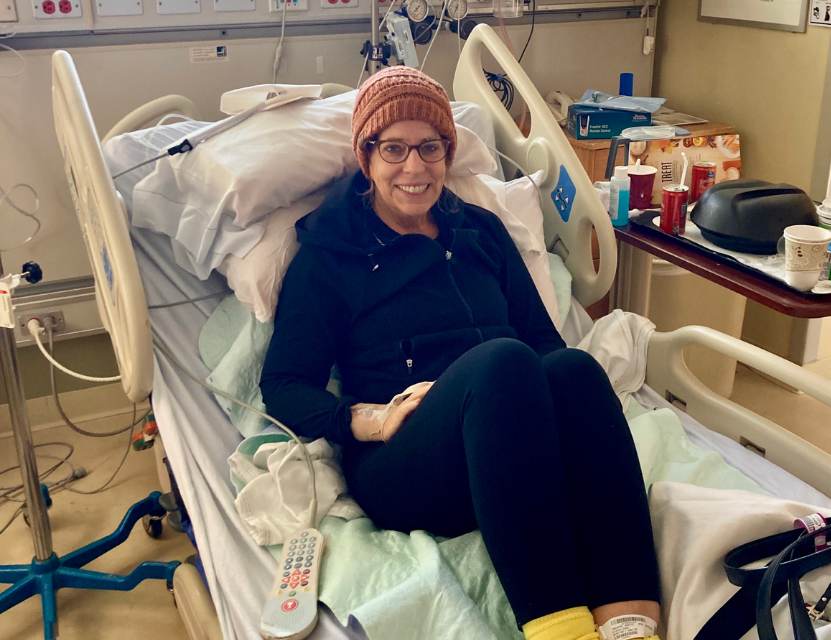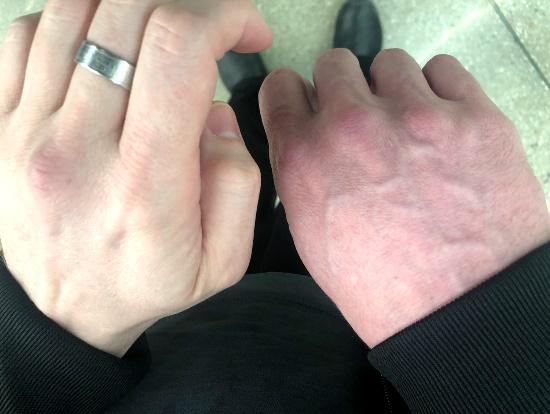Written by Josh Levs for allyenergy.com. Reposted with permission from Diane Burman.
Anyone deciding to run their first marathon is taking on a tremendous challenge. But for Diane Burman, who serves on the New York State Public Service Commission, it seemed unimaginable.
As a child, she had numerous bone and muscle problems that required multiple surgeries. She spent years in and out of hospitals, and at times had to use a wheelchair.
“Back then, many schools couldn’t handle kids in wheelchairs,” she recalls. “I stayed home and had a tutor.”
As an adult, she was diagnosed with complex regional pain syndrome. The Mayo Clinic describes it as a form of chronic pain that “typically develops after an injury, a surgery, a stroke or a heart attack. The pain is out of proportion to the severity of the initial injury. CRPS is uncommon, and its cause isn’t clearly understood.” Discussing Diane’s struggle once on Facebook, her husband Jonathan wrote, “I’m going to try to use Diane’s example of strength and dignity and perseverance in the face of real suffering as a model to emulate.”

Two years ago, Diane had brain surgery.

“They put a stimulator in my brain to help tamp down the significant health issues and pain issues on the left side of my body,” she says. The procedure helped bring her pain down from “off the charts” to about “a seven or eight out of ten on a normal day,” she says.
Though that’s still very high, she decided to “figure out how to live life to the fullest and get back with my personal and professional life, moving forward knowing what I need to do to deal with the pain without medication.” Being involved and present both at work and at home helps a great deal, she says.
Earlier this year, ALLY Energy CEO Katie Mehnert invited Diane to join the Women & Allies in Energy team for the TCS New York City marathon this coming November.
“I initially thought, ‘Oh, I can’t do this, physically and mentally,’” Diane says. “But the more I thought about it, the more it fit within the realm of all that I’m doing in the energy space, and trying to collaborate and succeed at things that seem insurmountable.”
So since February, she’s been running, increasing her distances incrementally. She joined her son and some of his fellow Army cadets for a 5K in Vermont. “At the end, listening to the cheers, you would have thought I came in first even though I came in last!”
She has a half marathon coming up. And when she participates in the New York race, the world’s largest marathon, it will be a significant date for her: “Two years after my brain surgery.” The next day, November 6, is Color the World Orange Day, created to bring recognition to CRPS.
The power of alliances
Diane is one of seven people on the commission that regulates energy, telecommunications, cable, and private water utilities for New York, a state of nearly 20 million people. As an energy leader who shares ALLY’s commitment to net zero, she sees the huge challenges that lie ahead. She’s working to help guide the transition to cleaner, greener energy while ensuring that people have the power they need along the way.
“Safety, affordability and reliability are critical,” she says. “And energy is personal to everyone. Most people can remember a time when they had a significant loss of power.”
A blackout in New York City when she was a child has stuck with her. “I was in a hospital critical care unit, listening to the grownups — doctors, nurses, and others — scared about the generators running out and how to triage the patients. I realized then the importance of the lights staying on and that planning. Who’s stepping up and being a leader? What’s the organizational structure?”
Cooperation is essential in making energy work and making the energy transition happen, Diane says. It takes a diverse community of people, with different knowledge, expertise, skills, experiences, and perspectives. And it takes a willingness to learn from each other. All this makes the marathon team such a strong metaphor.
“There isn’t one way to be an energy regulator, just as there isn’t one way to run a marathon. You have to have an openness to continuously trying to improve and learn. You need the right resources and supporters as well.”
Diane has worked to bring more women and people from marginalized communities into the energy sector. The more new and different contributions, she says, the more ways to see “challenges as opportunities.”
And just like in the marathon, Diane says, it’s crucial to have a realistic understanding of how long and hard the path to net zero will be. That means considering the pros and cons of handling each step in different ways. “And you need to know, when there’s a setback, to not just give up.”
Perhaps most importantly, Diane says, it takes allies.
“Being there for each other is a powerful thing.”






